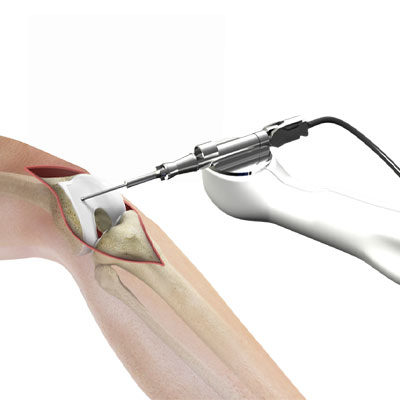
In a robotic joint replacement, knowledgeable surgeons use robot assistance to carry out the surgery. The robot powered hands assist with setting the boundaries in a better way based upon the patient individually. These boundaries help the robot precisely to eliminate the damaged part of the joint and replace it with artificial joint.
Arthritis might not have a cure yet, however new treatment practices are getting endlessly better at giving long-term relief. For patients experiencing severe knee pain caused by osteoarthritis, robotic knee replacement surgery might have the option to offer help with shorter recovery times and longer-lasting outcomes. Get the arthritis treatment in Vijayawada at joint replacement hospitals
During a traditional knee replacement procedure, damaged tissue in the knee is removed and replaced with an artificial joint. A robotic knee replacement is the same procedure performed with the assistance of a robotic arm.
While it may sound like something from the distant future, robot-assisted surgery techniques have been around for years. Still, confusion surrounding these procedures can put patients on the fence. To set the record straight, here are 6 things you should know about robotic knee replacement surgery.
If you’re a good candidate for traditional knee replacement surgery, you’re a good candidate for robotic knee replacement.
However, your doctor won’t recommend either type of a surgery during your first visit at robotic knee replacement hospitals in Vijayawada. Contingent upon the severity of your condition, they might recommend less invasive treatment methods first, like:
If you aren’t able to get the relief you need from these conservative treatments, knee replacement surgery may be able to help. But because most knee replacements only last between 10 and 20 years, traditional surgery is difficult to recommend for patients under the age of 60. New procedures like robotic knee replacement are starting to change that. More accurate implant positioning means that younger patients may be able to safely undergo total knee replacement surgery and get back to living an active lifestyle.
That being said, artificial joints don’t last forever. Joint replacement surgery is still a major decision. You’ll need to talk with your doctor to find out if you’re a good candidate.
One of the most common misconceptions about robotic knee replacement is that the surgery is done 100% robotically.
That’s simply not the case – while the procedure is assisted by a robotic arm, your orthopedic surgeon is still in control. The robotic arm’s only job is to help the surgeon perform with greater precision.
Technology assists the procedure in other ways, too. Before surgery, a CT scan is used to create a 3D model of the patient’s knee. This allows surgeons to more accurately place the implant. During the operation, the robotic arm uses data from the 3D model to create a predefined space for the surgeon to work in, preventing them from accidentally damaging the surrounding tissue.
Because robot-assisted techniques are still so new, many of the long-term benefits haven’t been properly studied yet. But short-term benefits, like the potential for reduced recovery time, are quickly becoming apparent.
With a traditional total knee replacement, the average patient won’t be able to resume normal activities like driving and going to work until 4 to 6 weeks after surgery. Robot-assisted technology could potentially cut this recovery time in half.
Smaller incisions combined with greater surgical precision means that less bone and tissue is disturbed, speeding up the body’s natural healing process.
Because robotic techniques allow for greater precision, surgeons can customize knee replacements to each patient’s anatomy. For some patients, this leads to a more natural feeling result.
Joint awareness is a common problem for patients post-surgery. Ideally, you should be able to completely forget about your joint replacement as you go about your day to day life. But for many patients, simple tasks like walking down stairs or kneeling can trigger joint awareness in the form of stiffness, numbness, or even pain.
While more information is needed to determine just how effectively robotic surgery can reduce joint awareness, doctors are hopeful that the improved accuracy of the procedure will lead to better long-term results.
State-of-the-art robotic instruments have the potential to improve outcomes for patients, but that’s not a replacement for good old fashioned experience. You’ll still want to choose an orthopedic surgeon who has completed a high volume of surgeries with good outcomes.
Robotic knee replacement surgery at joint replacement hospitals in Vijayawada comes with the similar risks as traditional knee surgery. These incorporate, however are not restricted to:
But because robot-assisted procedures require a smaller incision and can be performed with greater accuracy, doctors are hopeful that these risks can be significantly reduced.
Even with traditional surgery, serious complications are rare, occurring in only about 2% of knee replacement patients. Your doctor will carefully assess your health and discuss all of the potential risks and complications associated with surgery.
This prosthetic implantation surgery is performed by best orthopedic surgeon in Vijayawada with robotic assistance to address the degenerative condition of the hip joints.